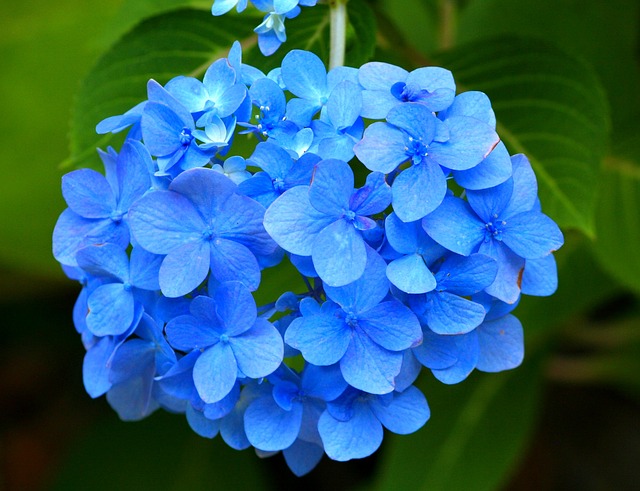Beyond PH: Changing the Color of Your Hydrangea
Most home gardeners think hydrangeas change color based on soil ph, but that isn’t exactly true. It isn’t the ph that causes the color change, it is the presence of aluminum in the soil, and the ability of the plant to absorb that aluminum.
Aside from white varieties, all hydrangeas have the ability to change color. Some varieties have a propensity towards pink or blue, so if you are purchasing the plants, tell the nursery what color is your goal, so they can steer you towards the best match. If you already have some growing in your yard, don’t worry about the variety, just try the guidelines below or give the pros a call.

If you want PINK blooms:
1. Test the ph of your soil. This is simple to do using a soil test kit. Add dolomite lime as directed on the package several times per year until the ph is between 6.0 and 6.2. If you add the lime without testing the ph, it is possible to raise the ph too high, which can interfere with iron absorption in the plants and cause them to become unhealthy. So if you choose to add lime without soil testing, do so cautiously, and be sure to do it only in conjunction with the next step below.
2. Because phosphorous interferes with aluminum absorption, use a fertilizer high in phosphorous. When looking at the numbers on a fertilizer package, phosphorous is always the middle number. For those seeking only organic solutions, bone meal is very high in phosphorous, at 3/15/0.
If you want BLUE blooms:
1. It is easier to just add a little aluminum to your soil than to test for it. A gentle and safe way to introduce aluminum is one tbsp of aluminum sulfate per gallon of water, sprayed on lightly every time you water. This will both add aluminum, and lower the ph. Do not overuse, too much will damage the plant!
2. Using a soil test kit, see if your soil requires further acidification than provided by the aluminum sulfate. The target ph range is 5.2 to 5.5. If further acidification is needed, pouring your used coffee grounds around the plant is an easy and organic way to lower acidity and provide nutrients.
3. Use a fertilizer that is high in potassium, the final number in the numerical trio. Wood ash (0/1/3) and kelp meal (1/0/2) are excellent organic choices.
These are the basic steps that will work to create pink or blue blooms in most situations. However, sometimes outside circumstances will be too great for these steps to overcome. If these steps fail to produce the desired shade of blooms, the only remedy is to grow the hydrangeas in pots, where conditions can be easily controlled.
For further scientific explanation of the process, please enjoy this New York Times article.

Leave a Reply